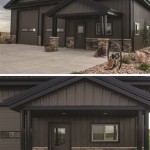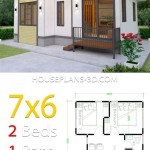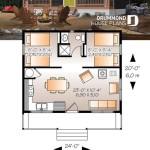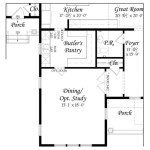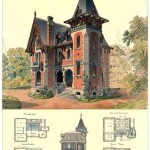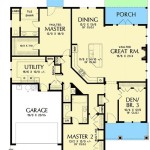Lowcountry House Plans: A Look at the Details
Lowcountry house plans represent a distinctive architectural style deeply rooted in the coastal regions of the Southern United States, particularly South Carolina, Georgia, and parts of North Carolina and Florida. This style is characterized by its adaptation to the region’s unique climate, landscape, and historical influences. Understanding the nuances of Lowcountry architecture requires a detailed examination of its key features, materials, and design principles.
The appeal of Lowcountry architecture lies in its ability to seamlessly blend functionality with aesthetic charm. These homes are not merely structures but rather integrated parts of the environment, designed to provide comfortable living spaces while celebrating the inherent beauty of the Lowcountry landscape. The details that make up this style are a testament to the ingenuity and practicality of early builders who sought to create homes that could withstand the challenges of the coastal climate.
Examining Lowcountry house plans reveals a consistent emphasis on open floor plans, expansive porches, and raised foundations, all of which contribute to the style's distinctive character. The choice of building materials, such as wood siding, metal roofs, and brick accents, further enhances the authenticity and durability of these homes. By carefully considering each element, architects and homeowners can create Lowcountry residences that are both functional and aesthetically pleasing.
Key Feature 1: Elevated Foundations and Expansive Porches
One of the most recognizable features of Lowcountry house plans is the elevated foundation. This design element serves multiple purposes, primarily addressing the region's susceptibility to flooding and providing enhanced ventilation. By raising the main living areas above ground level, the risk of water damage during storms and high tides is significantly reduced. This elevation also creates a crawl space beneath the house, allowing for easy access to plumbing, electrical wiring, and other utilities for maintenance and repairs.
The elevated foundation also contributes to the overall aesthetic appeal of the home. It provides a sense of grandeur and allows for the creation of attractive landscaping features around the base of the house. Many Lowcountry homes incorporate decorative brick or stone cladding around the foundation, adding a touch of elegance and visual interest. The elevated design also helps to improve air circulation beneath the house, which can help to prevent moisture buildup and reduce the risk of mold and mildew.
Complementing the elevated foundation is the expansive porch, often referred to as a piazza or veranda. This outdoor living space is an integral part of Lowcountry architecture, designed to provide a comfortable area for relaxation, socializing, and enjoying the surrounding landscape. Porches are typically deep and wide, offering ample space for seating, dining, and other outdoor activities. They are often screened-in to provide protection from insects and the elements, allowing for year-round enjoyment.
The design of the porch is carefully considered to maximize its functionality and aesthetic appeal. Many Lowcountry homes feature multiple porches, including front porches, back porches, and even second-story porches. These porches are often adorned with decorative columns, railings, and trim work, adding to the overall charm of the house. The use of natural materials, such as wood and stone, further enhances the connection between the porch and the surrounding environment.
The placement of the porch is also crucial. Front porches are typically oriented towards the street or main entrance, providing a welcoming space for visitors and creating a sense of community. Back porches, on the other hand, are often designed to be more private, offering a secluded retreat for homeowners to relax and unwind. Second-story porches provide elevated views of the surrounding landscape and offer a unique perspective on the natural beauty of the Lowcountry.
Key Feature 2: Material Choices and Architectural Details
The selection of building materials plays a significant role in defining the character of Lowcountry house plans. Traditional materials such as wood siding, metal roofing, and brick accents are commonly used to create homes that are both durable and aesthetically pleasing. These materials are chosen not only for their visual appeal but also for their ability to withstand the harsh coastal climate.
Wood siding is a popular choice for Lowcountry homes due to its versatility, affordability, and natural beauty. Clapboard siding, with its overlapping horizontal boards, is a classic option that provides a timeless look. Shiplap siding, with its tight-fitting boards, is another common choice, offering a clean and contemporary aesthetic. The type of wood used for siding can vary, but cedar and cypress are often preferred for their resistance to rot and insects.
Metal roofing is another hallmark of Lowcountry architecture, providing a durable and long-lasting alternative to traditional asphalt shingles. Metal roofs are highly resistant to wind, rain, and fire, making them an excellent choice for coastal areas prone to storms. They also offer superior energy efficiency, reflecting sunlight and reducing heat absorption, which can help to lower cooling costs. The distinctive sound of rain on a metal roof is also a cherished aspect of Lowcountry living.
Brick accents are frequently incorporated into Lowcountry house plans to add visual interest and texture. Brick can be used for foundation cladding, chimney stacks, walkways, and even interior walls. The warm, earthy tones of brick complement the natural surroundings and create a sense of timeless elegance. The use of reclaimed brick, with its weathered appearance and unique character, is also a popular trend in Lowcountry architecture.
Architectural details further enhance the charm and authenticity of Lowcountry homes. Decorative columns, often adorning porches and entryways, add a touch of classical elegance. Window shutters, both functional and decorative, provide protection from the sun and add visual interest to the facade. Ornate trim work, including crown molding, baseboards, and window casings, adds a refined touch to the interior spaces. These details, while seemingly small, contribute significantly to the overall aesthetic appeal of Lowcountry architecture.
Key Feature 3: Open Floor Plans and Natural Light
Modern Lowcountry house plans often feature open floor plans that promote a sense of spaciousness and connectivity. These designs typically combine the living room, dining room, and kitchen into a single, flowing space, creating an ideal environment for entertaining and family gatherings. Open floor plans also maximize the amount of natural light that enters the home, creating a bright and inviting atmosphere.
The integration of indoor and outdoor living spaces is another key aspect of Lowcountry design. Large windows and doors, often leading to porches or patios, allow for seamless transitions between the interior and exterior environments. This connection to the outdoors is essential for enjoying the natural beauty of the Lowcountry landscape and taking advantage of the region's mild climate.
Natural light is a crucial element in Lowcountry homes, and architects carefully consider the placement of windows and doors to maximize its benefits. Large windows are strategically positioned to capture sunlight throughout the day, while skylights and clerestory windows can be used to bring light into interior spaces that would otherwise be dark. The use of light-colored walls and ceilings further enhances the effect of natural light, creating a bright and airy atmosphere.
The orientation of the house is also carefully considered to optimize natural light and ventilation. In general, Lowcountry homes are oriented to take advantage of the prevailing breezes, which can help to cool the house during the hot summer months. Overhangs and awnings are often used to provide shade and reduce the amount of direct sunlight that enters the house, further enhancing energy efficiency.
The use of sustainable building practices is becoming increasingly important in Lowcountry architecture. Energy-efficient windows and doors, along with high-performance insulation, can help to reduce energy consumption and lower utility bills. Solar panels and rainwater harvesting systems are also becoming more common, allowing homeowners to reduce their environmental impact and conserve natural resources. By incorporating these sustainable features, Lowcountry homes can be both beautiful and environmentally responsible.

Low Country Architecture Beach House Plans From Home Designs

Low Country Architecture Beach House Plans From Home Designs

Low Country Architecture Beach House Plans From Home Designs

Low Country Architecture Beach House Plans From Home Designs

Plan 60028rc Spacious Low Country Home Homes Plans House

Low Country Architecture Beach House Plans From Home Designs

Lowcountry Architecture Simple Functional And Elegant

Lowcountry Architecture Simple Functional And Elegant

Low Country Architecture Beach House Plans From Home Designs

Low Country Architecture Beach House Plans From Home Designs
Related Posts


